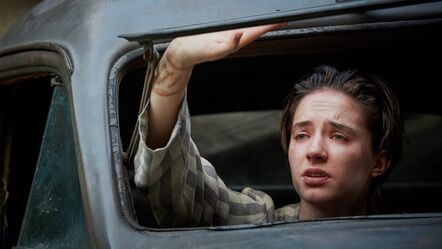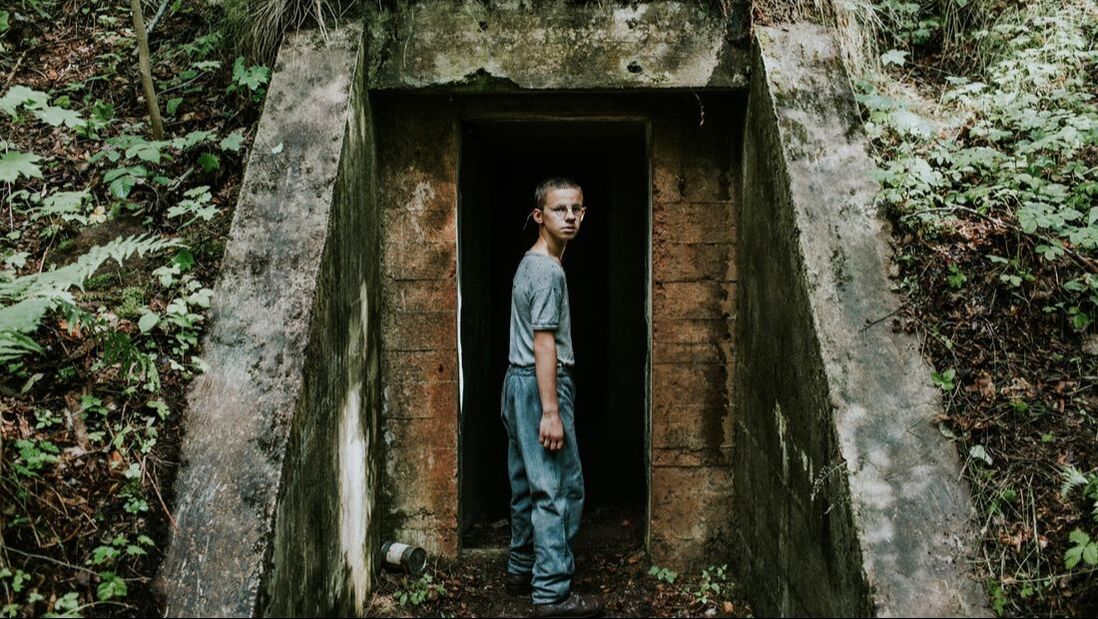 William Golding wrote, in his novel Lord of the Flies, “Maybe there is a beast… maybe it's only us”... ...When you survive one of the worst atrocities in human history but are left to fend for yourself with nowhere to go and starving wolfhounds blocking your path, how soon until you succumb to your basic human instinct...survival? Writer/director Adrian Panek sets out to answer this question with Werewolf or WILKOŁAK. Set in 1945 Poland, the film centers on a group of children liberated from Gross Rosen concentration camp and left by their liberators in an abandoned orphanage with little food and water. While the group tries to regain the humanity that was stripped from them, they find themselves under attack and surrounded by bloodthirsty SS-trained wolfhounds. Panek takes the ideas presented by Golding’s novel and puts a new spin on them while still managing to create a story of humanity. In order to tell a story with that kind of depth you need to have a cast that can deliver those performances. Child actors can either make or break a film, and each of the young actors in Werewolf/WILKOŁAK deliver fantastic performances. The three oldest kids in particular deliver some of the most nuanced. The first of these three that we meet is Wladek (Kamil Polnisiak). He hides in the shadows watching the atrocities occur. If we are to assign a Lord of the Flies character, it is clear that he is meant to represent Jack but, whereas Jack’s descent into madness is slow, Polnisiak delivers scenes from the start that show signs that the horror Wladek has endured has impacted his mental state. Moments where Panek lets the camera linger give us a sense, as in American Psycho, that there is something inside of young Wladek that is broken and dark, made all the more evident by how the wolfhounds react and respond to him. Perhaps the biggest obstacle standing in Wladek’s way is the newcomer Hanys (Nicolas Przygoda), a camp survivor that keeps running away when the Russian liberators pick him up. He starts the film as very cagey and standoffish, but as he starts to find his path within the group, he soon becomes the muscle/protector, in direct opposition of Wladek’s personality. His character arc of runaway-turned-protector is interesting, and Przygoda delivers a very physical and demanding performance for someone his age while balancing out the trio of main older kids. Leading the group is Hanka (Sonia Mietielica), and it is with her I think the movie really sings. While Przygoda’s character Hanys does have traits of Flies’ Ralph, it is Mietielica’s Hanka that takes on most of the character's traits. Being the de facto leader/pseudo-mother of the group, we see her go through the motions of having freedom only to have to survive against the odds once again. Mietielica delivers a standout performance with little bright moments, such as finding clothes or listening to music again. We watch as a young woman on the cusp of adulthood grasps onto things we often take for granted as a way to allow herself a moment of freedom and calm, even as the hounds are loose. Panek gives these scenes the space with lovely mid to close shots, letting them play out and allowing the performances to speak for themselves. While the human performances are wonderful, we cannot forget about the intense and amazing acting done by the German Shepherd dog actors. We see them bite, bark, and tear through the world around them with excellent animal training by Gergo Benkoczy. Of course, when working with live animals and young actors you want to ensure their safety, and the stunt team Jaroslaw Golec, Pawel Jusinski, Tomasz Krzemieniecki and Kamil Pardo did an amazing job with the dog attack sequences. One particular scene that stands out to me with great acting on both the human and animal fronts would be when the children, desperate for food, surround a hound that they trapped in the building. There was a moment when I started to look away for fear of seeing animal cruelty, but instead they see a little bit of humanity in the animal and, rather than succumb to their baser impulses, decide to spare it. The way Panek wrote and directed the scene makes it one of the many reasons I loved this film. Werewolf/WILKOŁAK uses the word “werewolf” to instill this fear in us. As Panek explains in his director’s statement to the European Film Awards, “A werewolf is a creature between a human and an animal...An evil was defined by simple, animalistic gestures, and people reduced all their existence to the struggle for life.” Setting the film after the liberation of concentration camps can be a touchy subject, especially for those that have a history with the Holocaust. Panek never seeks to cheapen or make light of the atrocities, instead using it as a backdrop to tell a story of humanity, survival, and, in the end, that which we as humans look to even in our darkest of moments…hope. Werewolf/WILKOŁAK comes Blu-ray, DVD and Digital from Indiecan Entertainment December 1st. By Kalani Landgraf
0 Comments
Leave a Reply. |
Archives
March 2023
|


 RSS Feed
RSS Feed